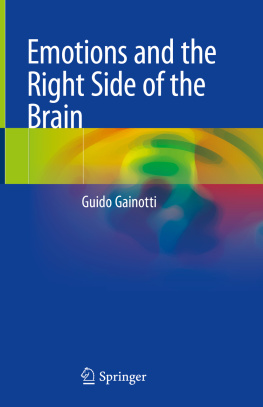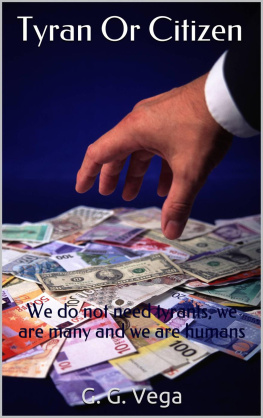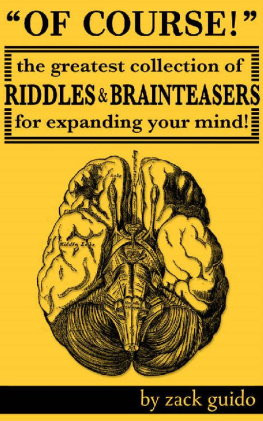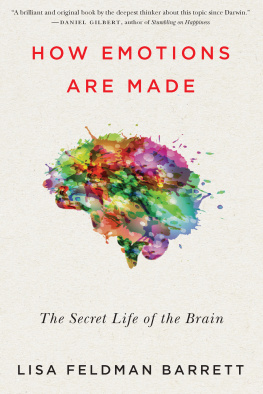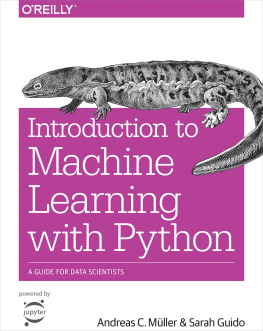Guido Gainotti - Emotions and the Right Side of the Brain
Here you can read online Guido Gainotti - Emotions and the Right Side of the Brain full text of the book (entire story) in english for free. Download pdf and epub, get meaning, cover and reviews about this ebook. year: 2020, publisher: Springer International Publishing, genre: Computer. Description of the work, (preface) as well as reviews are available. Best literature library LitArk.com created for fans of good reading and offers a wide selection of genres:
Romance novel
Science fiction
Adventure
Detective
Science
History
Home and family
Prose
Art
Politics
Computer
Non-fiction
Religion
Business
Children
Humor
Choose a favorite category and find really read worthwhile books. Enjoy immersion in the world of imagination, feel the emotions of the characters or learn something new for yourself, make an fascinating discovery.
- Book:Emotions and the Right Side of the Brain
- Author:
- Publisher:Springer International Publishing
- Genre:
- Year:2020
- Rating:3 / 5
- Favourites:Add to favourites
- Your mark:
- 60
- 1
- 2
- 3
- 4
- 5
Emotions and the Right Side of the Brain: summary, description and annotation
We offer to read an annotation, description, summary or preface (depends on what the author of the book "Emotions and the Right Side of the Brain" wrote himself). If you haven't found the necessary information about the book — write in the comments, we will try to find it.
Emotions and the Right Side of the Brain — read online for free the complete book (whole text) full work
Below is the text of the book, divided by pages. System saving the place of the last page read, allows you to conveniently read the book "Emotions and the Right Side of the Brain" online for free, without having to search again every time where you left off. Put a bookmark, and you can go to the page where you finished reading at any time.
Font size:
Interval:
Bookmark:
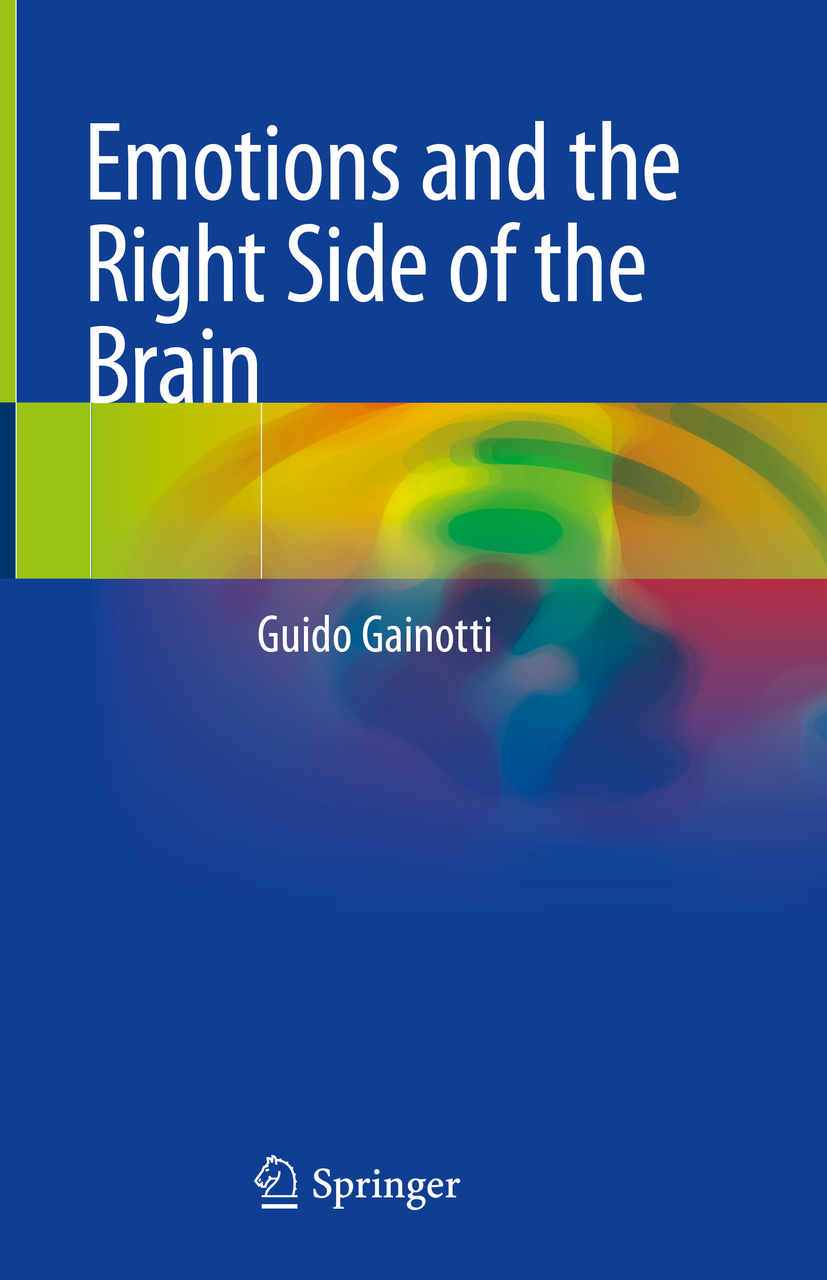

This Springer imprint is published by the registered company Springer Nature Switzerland AG
The registered company address is: Gewerbestrasse 11, 6330 Cham, Switzerland
Approximately 50 years have elapsed since Terzian (, by an attempt to define the meaning of the term emotions and to analyse similarities and differences between the two systems provided with adaptive value (i.e. the emotional and the cognitive system) which, in different situations, allow us to face a rapidly changing milieu.
In Chap. , some psychopathological implications of the hemispheric asymmetries for emotions will be taken into account. The conclusion will be that no real conflict exists between models that surmise a right hemisphere dominance for emotions and those that hypothesise a different hemispheric representation of sympathetic and parasympathetic sections of the autonomic nervous system, because special relations exist between emotional system and sympathetic activities.
- Davidson RJ. Hemispheric specialization for cognition and affect. In: Gale A, Edwards J, editors. Physiological correlates of human behavior. London: Academic Press; 1983. p. 20326.
- Gainotti G. Raction catastrophiques et manifestations dindiffernce au cours des atteintes crbrales. Neuropsychologia. 1969;7:195204. Crossref
- Gainotti G. Emotional behavior and hemispheric side of the lesion. Cortex. 1972;8:4155. Crossref
- Rossi GF, Rosadini G. Experimental analysis of cerebral dominance in man. In: Millikan CJ, Darly FL, editors. Brain mechanisms underlying speech and language. New York: Grune and Stratton; 1967.
- Terzian H. Behavioural and EEG effects of intracarotid sodium amytal injection. Acta Neurochir. 1964;12:2309. Crossref
In our daily life we are submerged by messages, coming from media and publicity that use the term emotions in relation to different situations, such as cars, money, travels, exhibitions, football, clothing and chocolate, to promise us new and exciting experiences. This undifferentiated and misleading use of the word emotions has forced researchers to give a more precise definition of this term, identifying the semantic traits that define and distinguish it from other similar words. There is not, however, a general consensus among scholars about the definition of this word and the boundaries of the concept of emotions are rather vague and indistinct.
Most authors agree that emotions are rather complex and stereotyped behavioural schemata, characterised by particular types of subjective experience and by an increased activation of the vegetative system. However, there is much less agreement over which behavioural schemata to include in this area and how to demarcate emotions from other behavioural patterns belonging to contiguous but different areas. For instance, two terms such as anger and love, commonly considered as typical examples of emotions in the context of the current meaning of this word, have a different status for theorists of emotions, because anger is commonly considered one of the basic emotions, whereas love is not included in this area. A rough but effective method of differentiating between these more or less similar behavioural patterns could be to identify reference axes and in relation to them to distinguish the schemata that are part of the area of emotions from those that are not. A first reference axis could be the complexity and level of phylogenetic development of the behavioural schema in question. This axis could extend from the stage of simple reflexes to that of cognitive behaviour. On this axis, the emotions would be located at an intermediate level of complexity. On one side they would be differentiated by reflex behaviours (such as sneezing or flinching), which are very simple, primitive and innate behavioural schemata and, on the other side, by cognitive behaviours, with respect to which they are distinguished by lesser complexity due to their automatic (rather than intentional) nature and to the fact that they are anchored to relatively fixed response patterns.
A second reference axis might be based on the duration of the behavioural schema in question. This axis could range from very brief reactions, which are typically triggered by external events (as are the reflex responses we have just mentioned) to long-lasting behavioural schemata, which are stable over time and are not provoked by external stimuli. According to Ekman () acknowledged the close familiarity between emotions, affect and personality traits and agreed that affect is closely related to emotions, but refers to more enduring and less reactive states.
Font size:
Interval:
Bookmark:
Similar books «Emotions and the Right Side of the Brain»
Look at similar books to Emotions and the Right Side of the Brain. We have selected literature similar in name and meaning in the hope of providing readers with more options to find new, interesting, not yet read works.
Discussion, reviews of the book Emotions and the Right Side of the Brain and just readers' own opinions. Leave your comments, write what you think about the work, its meaning or the main characters. Specify what exactly you liked and what you didn't like, and why you think so.

